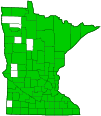white avens
(Geum canadense)
Conservation • Wetland • Description • Habitat • Ecology • Use • Distribution • Taxonomy
Description |
White avens is a 16″ to 40″ tall, erect, perennial forb that rises on one or more stems from a small caudex and rhizomes. It sometimes forms colonies. The stems are erect, slender, round, and green. They are hairless or sparsely hairy near the base, and densely covered with short, velvety hairs and scattered long hairs toward the top. In the spring it appears as a rosette of basal leaves. The basal leaves are long-stalked and compound. They are usually palmately divided into 3 leaflets (ternate), sometimes pinnately divided into 5 leaflets. Sometimes there are 2 or 4 additional small basasl leaflets. The terminal leaflet is broadly egg-shaped, up to 4″ long and 3″ wide, and may have one or two shallow lobes on each side. It is tapered at the base and tapers to a point at the tip. The upper surface is sparsely covered with appressed hairs. The lower surface is hairy. The margins are coarsely toothed with sharp, forward pointing teeth. The lateral leaflets are similar but narrower and slightly smaller. The stem leaves are alternate. Lower stem leaves are short-stalked, are divided into 3 leaflets, and are otherwise similar to basal leaves. The leaflets are lance-shaped or diamond-shaped (rhombic). At base of the compound leaf there is a pair of leaf-like appendages (stipules). The stipules are egg-shaped, ⅜″ to ¾″ long, usually toothed, and sometimes shallowly lobed. Stem leaves become shorter stalked, smaller, and less divided as they ascend the stem. Upper stem leaves are undivided and almost stalkless. The inflorescence is a single flower or a loose cluster of a few flowers at the end of the stem and rising from upper leaf axils. It is on a stalk that is up to 2″ long; is densely covered with short, velvety hairs; and sometimes has a few long, silky hairs. The flowers are about ½″ wide. There are 5 sepals, 5 petals, numerous stamens, and 50 to 80 styles. The sepals are green, lance-shaped, pointed, about 3 ⁄16″ long, and about 1⁄16″ wide at the base. They spread outwards or bend backwards. The petals are white, about ¼″ long, and about ⅛″ wide. They are distinctly narrowed at the base (clawed), well separated, and widely spreading or somewhat bent backward. They are as long or longer than the sepals. There is a raised structure (hypanthium) in the center of the flower. The stamens are arranged in a ring at the base of the hypanthium. They have white stalks (filaments) and white anthers that soon turn brown. The infructescence is a bristly, spherical cluster of 30 to 60 seed capsules (achenes). It is green at first, eventually turning brown, and is ½″ to ¾″ in diameter when measured to the tips of the bristles. The sepals persist in fruit and are bent backwards. The bristles are the styles that have persisted in fruit. They are about ¼″ long and they are hooked at the tip. The hooked tip is a 1⁄16″ long terminal segment that eventually falls off. The fruit disperses by clinging to fur of passing animals or legs of passing hikers. |
Height |
16″ to 40″ |
Flower Color |
White |
Similar Species |
Large-leaved avens (Geum macrophyllum var. perincisum) lower stem is densely hairy. The terminal segment of basal leaves is round to kidney-shaped and larger, 2″ to 4¾″ wide. The lateral leaflets are much smaller. The petals are yellow. Yellow avens (Geum aleppicum) stems are stout. The lower stem is densely hairy. Lower stem leaves are pinnately divided into 5 or more leaflets. There are often minute, minor leaflets between the principal leaflets. The petals are yellow. It is found in wet areas. |
Habitat |
Dry to moist. Woods, disturbed areas. Light shade or partial sun. |
Ecology |
Flowering |
May to June |
Pests and Diseases |
|
Use |
|
Distribution |
||
|
Sources |
|
| 7/10/2024 | ||
Nativity |
||
Native |
||
Occurrence |
||
Common |
||
Taxonomy |
|
| Kingdom | Plantae (Plants) |
| Division | Tracheophyta (Vascular Plants) |
| Subdivision | Spermatophytina (Seed Plants) |
| Class | Magnoliopsida (Dicots) |
Order |
Rosales (Roses, Elms, Figs, and Allies) |
Family |
Rosaceae (Rose) |
| Subfamily | Rosoideae (Brambles, Roses, Strawberries, and Allies) |
| Tribe | Colurieae (avens) |
Genus |
Geum (avens) |
Subordinate Taxa |
|
Geum canadense is a variable species and several varieties have been described based on pubescence patterns, flower structure, achene size, and number of achenes per flower. However, there is a continuous gradation among all of these features. Most authors do not recognize any varieties. Some authors recognize just one variety, var. texanum, which is geographically restricted to Arkansas, Oklahoma, and Texas, and which flowers significantly earlier than the rest of the species. |
|
white avens (Geum canadense var. camporun) white avens (Geum canadense var. canadense) white avens (Geum canadense var. grimesii) white avens (Geum canadense var. texanum) |
|
Synonyms |
|
Caryophyllata alba Geum album Geum camporum Geum canadense var. brevipes Geum carolinianum Geum glutinosum Geum laciniosum Geum meyerianum Geum urbanum Sieversia caroliniana |
|
Common Names |
|
| white avens | |
Glossary
Achene
A dry, one-chambered, single-seeded seed capsule, formed from a single carpel, with the seed attached to the membranous outer layer (wall) only by the seed stalk; the wall, formed entirely from the wall of the superior ovary, does not split open at maturity, but relies on decay or predation to release the contents.
Axil
The upper angle where a branch, stem, leaf stalk, or vein diverges.
Caudex
A short, thickened, woody, persistent enlargement of the stem, at or below ground level, used for water storage.
Claw
A stalk-like narrowed base of some petals and sepals.
Compound leaf
A leaf that is divided into leaflets, each leaflet having the general appearance of a leaf, with all leaflets attached to a single leaf stem.
Filament
On plants: The thread-like stalk of a stamen which supports the anther. On Lepidoptera: One of a pair of long, thin, fleshy extensions extending from the thorax, and sometimes also from the abdomen, of a caterpillar.
Hypanthium
A cup-like tubular structure of a flower formed from the fused bases of sepals, petals, and stamens, that surrounds the pistil. Its presence is diagnostic of many families, including Rosaceae, Ribes, and Fabaceae.
Palmate
Similar to a hand. Having more than three lobes or leaflets that radiate from a single point at the base of the leaf.
Pinnate
On a compound leaf, having the leaflets arranged on opposite sides of a common stalk. On a bryophyte, having branches evenly arranged on opposite sides of a stem.
Rhizome
A horizontal, usually underground stem. It serves as a reproductive structure, producing roots below and shoots above at the nodes.
Sepal
An outer floral leaf, usually green but sometimes colored, at the base of a flower.
Stipule
A small, leaf-like, scale-like, glandular, or rarely spiny appendage found at the base of a leaf stalk, usually occurring in pairs and usually dropping soon.
Ternate
Refers to leaves that are divided into three leaflets or sections.
Visitor Photos |
||
Share your photo of this plant. |
||
This button not working for you? |
||
Luciearl |
||
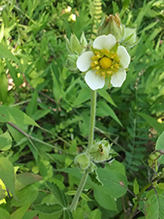 |
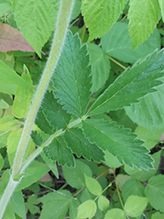 |
|
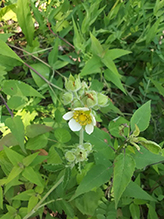 |
 |
|
 |
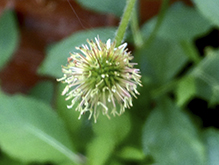 |
|
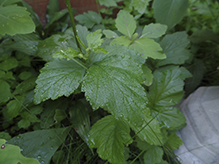 |
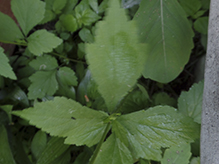 |
|
MinnesotaSeasons.com Photos |
||
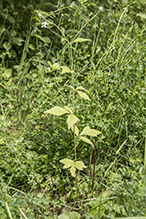 |
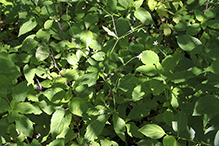 |
|
Plant |
||
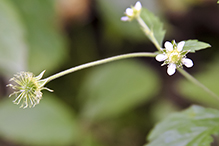 |
 |
|
Inflorescence |
||
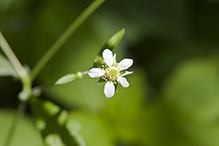 |
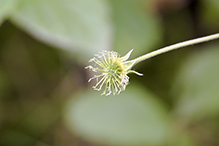 |
|
Flower |
Fruiting head | |
 |
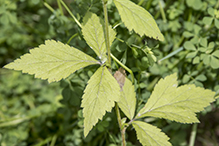 |
|
Leaf |
||
 |
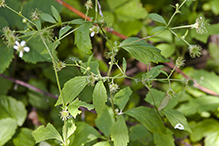 |
|
Infructescence |
||

Slideshows |
White Avens (Geum canadense) |

|
Geum canadense WOOD AVENS |

|

Visitor Videos |
||
Share your video of this plant. |
||
This button not working for you? |
||
|
Other Videos |
||
|

Visitor Sightings |
||
Report a sighting of this plant. |
||
This button not working for you? |
||
Luciearl |
Location: Lake Shore, MN |
 |
| Luciearl 6/24/2020 |
Location: Fairview Twp, Cass County |
 |
MinnesotaSeasons.com Sightings |
||

|
Created: Last Updated: © MinnesotaSeasons.com. All rights reserved. |
